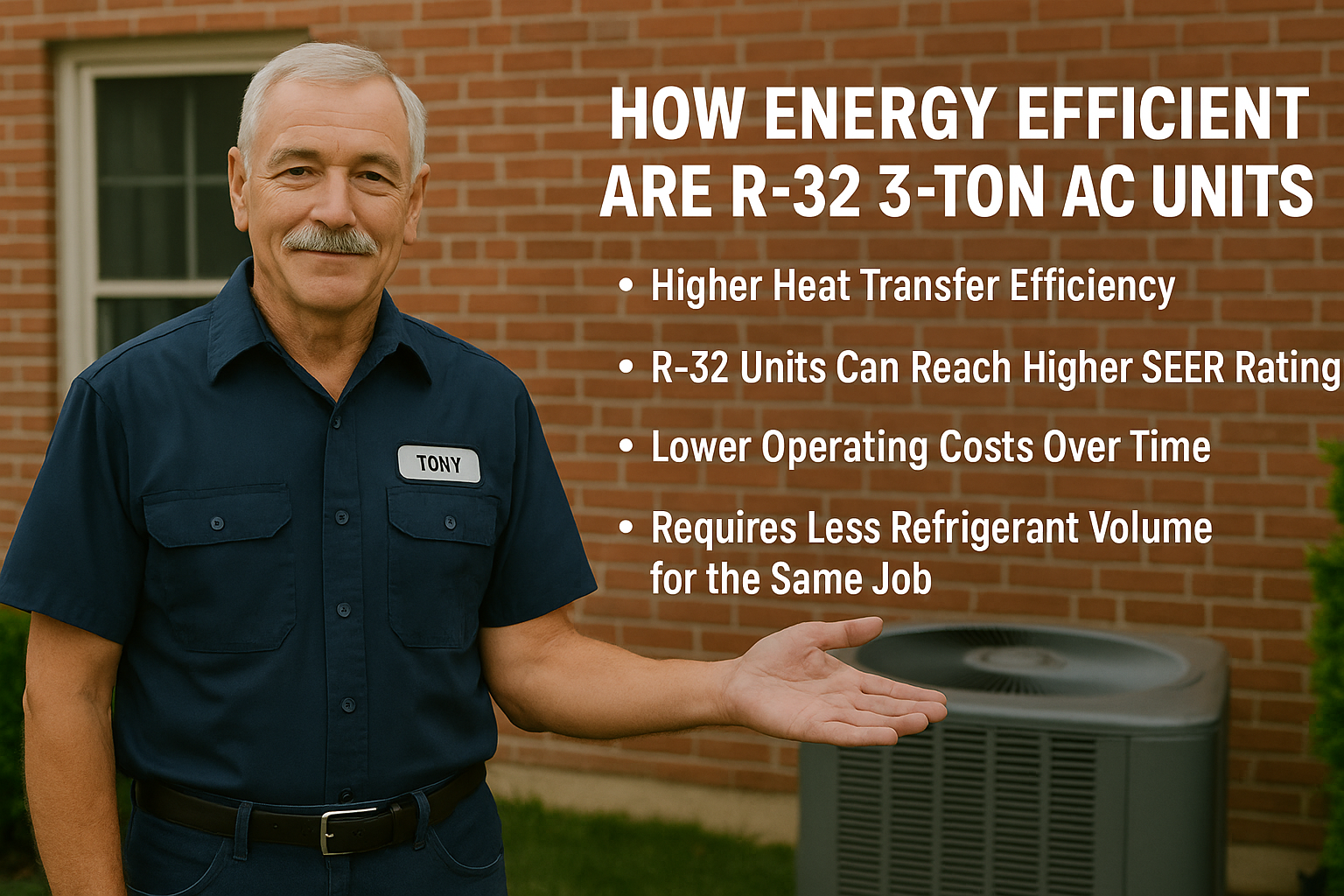Hi again—Tony here. If you’re like most homeowners I talk to, you’re not just looking for cold air—you’re looking to save real money on energy bills without sacrificing comfort. That’s where R-32 really shines.
Let’s dig into what makes these 3-ton units so efficient, and why switching could be one of the smartest energy decisions you make this year.
🔁 1. Higher Heat Transfer Efficiency = Less Energy Waste
R-32 has a higher heat transfer coefficient than R-410A. That means it does a better job moving heat out of your home, requiring less compressor work—the biggest energy draw in your AC.
In practice? That means your system runs shorter cycles, cools faster, and uses less electricity.
🔗 Daikin: Energy Efficiency of R-32 Refrigerant
🌡️ 2. R-32 Units Can Reach Higher SEER Ratings
Seasonal Energy Efficiency Ratio (SEER) is the metric we use to gauge AC performance. The higher the SEER, the better the efficiency.
Many R-32 3-ton residential models reach SEER2 ratings of 16–18 or higher, depending on pairing with air handlers and installation conditions. That’s often 10–20% more efficient than legacy systems.
🔗 Source – Carrier: R-32 Efficiency Benefits
🔗 Source – Trane: SEER2 Efficiency Rating Guide
💸 3. Lower Operating Costs Over Time
The U.S. Department of Energy estimates that heating and cooling account for about 50% of a typical home's energy bill. With an R-32 unit, that slice shrinks.
Depending on your climate and how your old system was running, homeowners switching to an R-32 system can save $200–$500 per year in electricity costs.
🔗 Source – DOE Energy Saver: Heating and Cooling
🔄 4. R-32 Requires Less Refrigerant Volume for the Same Job
Compared to R-410A, R-32 systems use about 30% less refrigerant by weight for the same cooling capacity. Less refrigerant means your compressor does less work to maintain pressure, reducing power draw over time.
That’s why so many manufacturers are redesigning their coils and compressors to work specifically with R-32—it lets them optimize for performance without overbuilding.
✅ Quick Efficiency Checklist
| Feature | R-410A (Legacy) | R-32 (Modern) |
|---|---|---|
| GWP | 2088 | 675 |
| Typical SEER2 (3-ton) | 13–15 | 16–18+ |
| Refrigerant Charge Volume | High | ~30% Lower |
| Energy Cost Over 10 Years | Higher | Lower (by ~$200–500/year) |
🧰 Real-World Takeaway from Tony
I’ve installed hundreds of AC units over the years, and let me tell you—the R-32 systems are not just hype. They’re cleaner to charge, quieter to run, and noticeably more efficient right out of the box.
If you want to cut your cooling costs this summer without cutting corners, R-32 is the move. Want a hand picking the right 3-ton model? Let’s talk—I’ll help you figure out what fits your home and budget.
In the next topic you will know about: Total Cost of Ownership: R-32 Units vs. Traditional ACs







